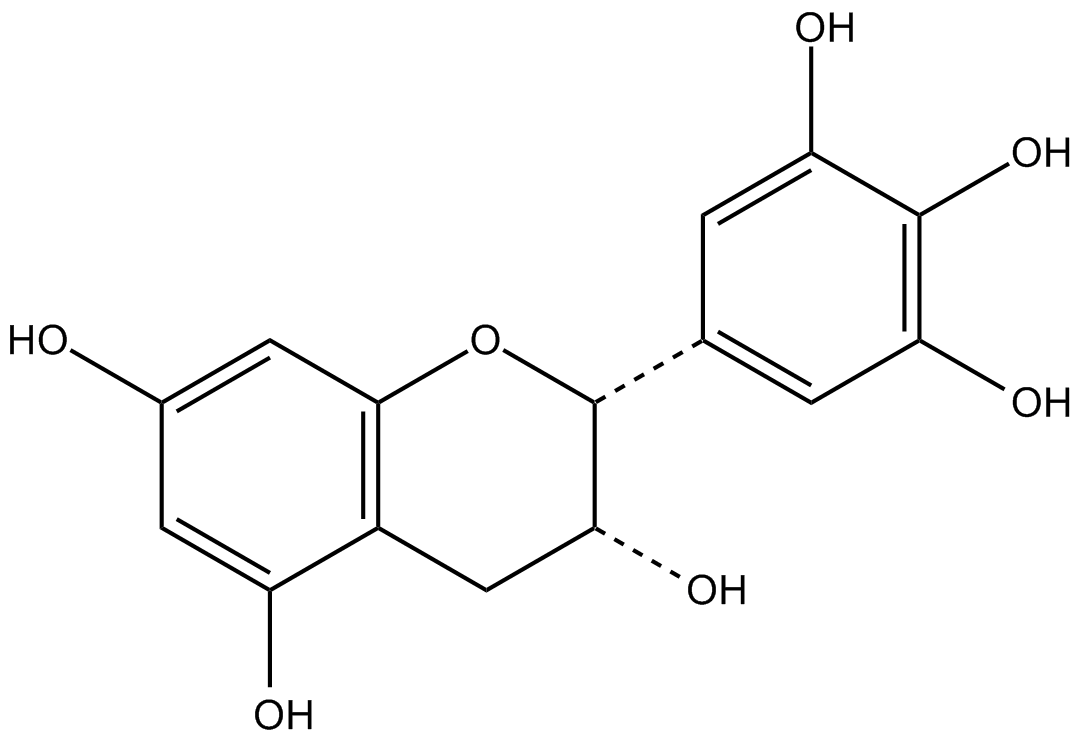(-)-epigallocatechin (Synonyms: (-)EGC, epi-Gallocatechin, NSC 674039) |
| Catalog No.GC17242 |
La (-)-épigallocatéchine (épigallocatéchine) est le flavonoÏde le plus abondant dans le thé vert, peut se lier aux polypeptides natifs dépliés et empêcher la conversion en fibrilles amyloÏdes.
Products are for research use only. Not for human use. We do not sell to patients.

Cas No.: 970-74-1
Sample solution is provided at 25 µL, 10mM.
(-)-epigallocatechin is a polyphenol in green tea [1].
(-)-epigallocatechin (EGC) plays an important role in cell growth inhibition, apoptosis and bone metabolism.
(-)-epigallocatechin is a polyphenol in green tea. In MCF-7 and MDA-MB-231 breast cancer cell lines, EGC significantly inhibited cell growth and induced apoptosis, which were independent of p53 and required Fas signaling [1]. In H1299 cells, EGC (10-40 µM) reduced cell viability in a dose dependent way. In Hep-3B cells, EGC (40/80 µM) also reduced cell viability. However, EGC (20 µM) slightly increased cell viabilities in SK-Hep-1 and OECM-1 cells but significantly decreased cell viabilities at concentrations up to 40 µM. EGC exhibited cytotoxicity with IC50 values of 26, 33 and 22 µM in H1299, OECM-1 and SAS cells, respectively. In H1299, OECM-1 and SAS cells, EGC (40 µM) induced apoptosis by 30, 28 and 24%, respectively. In H1299 cells, EGC (40 µM) inhibited hTERT promoter activity in a time- and dose- dependent way and also inhibited hTERT mRNA expression, which was important for cell proliferation [2].
In ICR mice, EGC (0.5 and 1.0 g/kg/d) significantly inhibited platelet aggregation by 18.4% and 25.6% respectively and also significantly prolonged blood clotting time (BCT) and bleeding time (BT), which suggested that the blood anticoagulation and antiplatelet activity of EGC [3].
References:
[1]. Vergote D, Cren-Olivé C, Chopin V, et al. (-)-Epigallocatechin (EGC) of green tea induces apoptosis of human breast cancer cells but not of their normal counterparts. Breast Cancer Res Treat, 2002, 76(3): 195-201.
[2]. Lin SC, Li WC, Shih JW, et al. The tea polyphenols EGCG and EGC repress mRNA expression of human telomerase reverse transcriptase (hTERT) in carcinoma cells. Cancer Lett, 2006, 236(1): 80-88.
[3]. Chen XQ, Wang XB, Guan RF, et al. Blood anticoagulation and antiplatelet activity of green tea (-)-epigallocatechin (EGC) in mice. Food Funct, 2013, 4(10): 1521-1525.
Average Rating: 5 (Based on Reviews and 8 reference(s) in Google Scholar.)
GLPBIO products are for RESEARCH USE ONLY. Please make sure your review or question is research based.
Required fields are marked with *




















